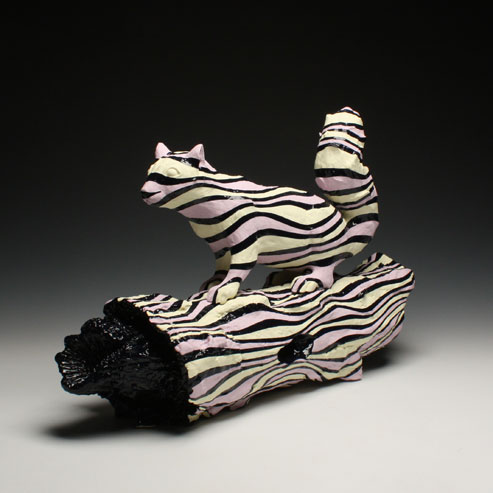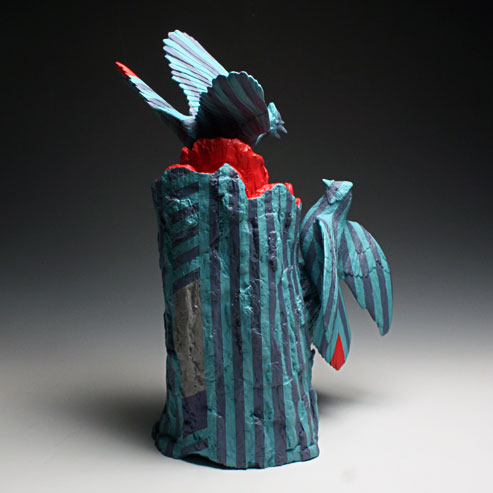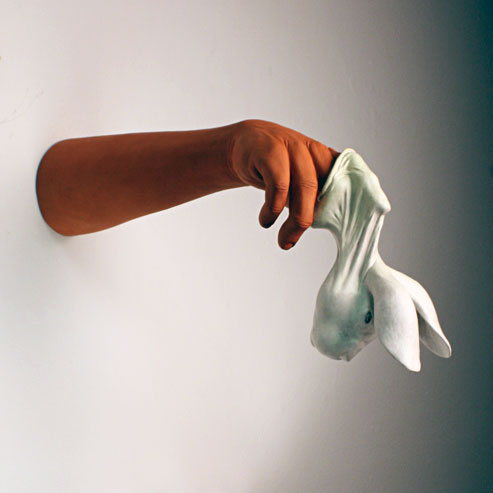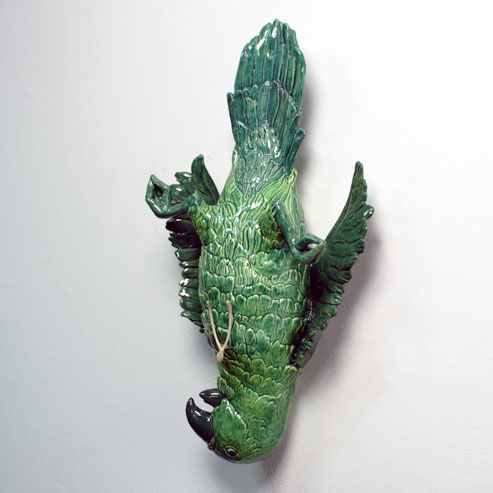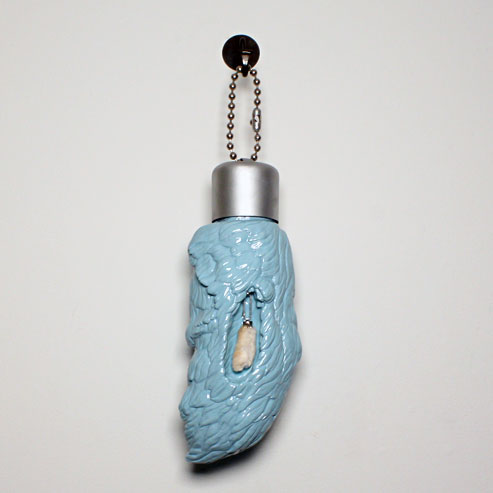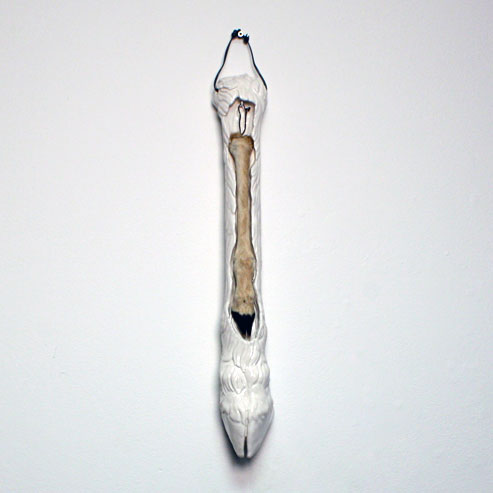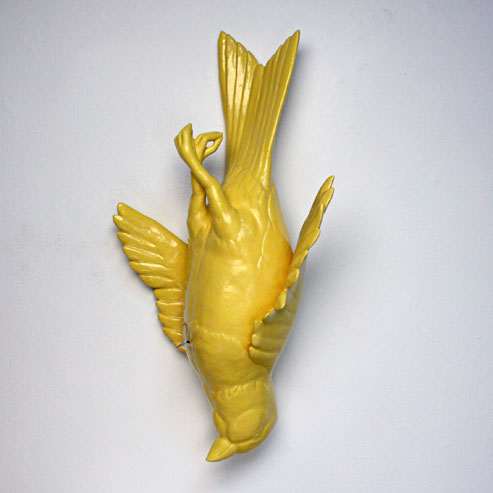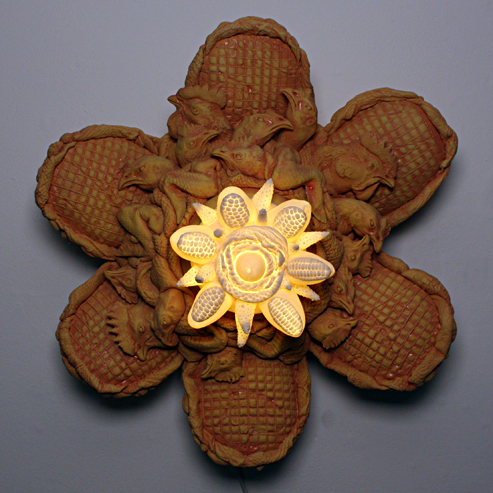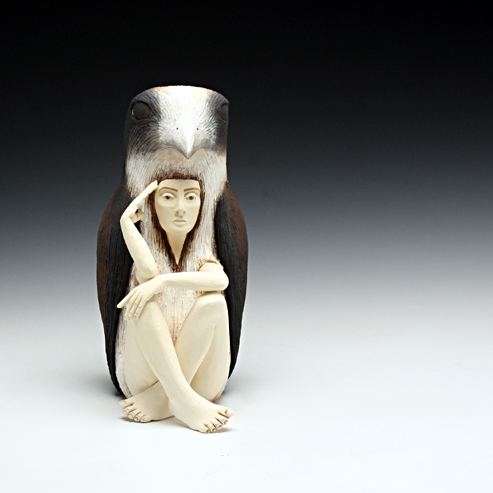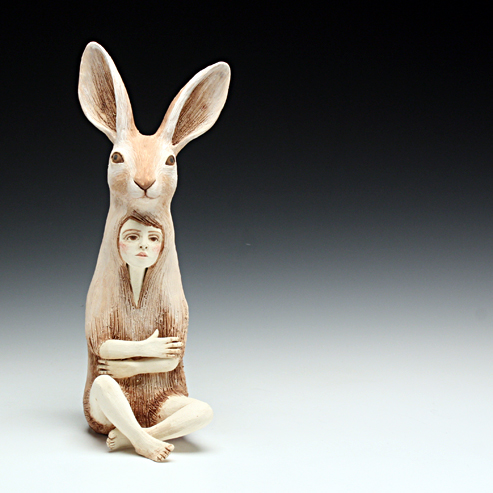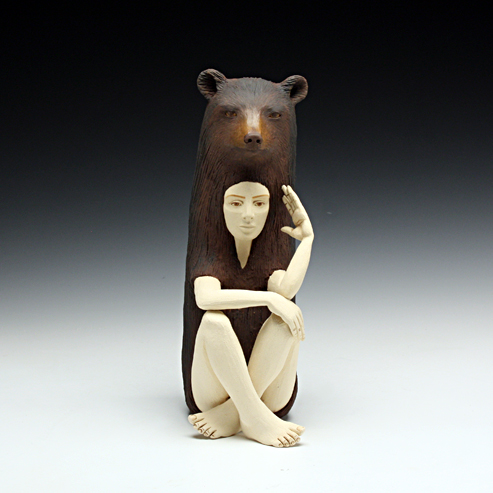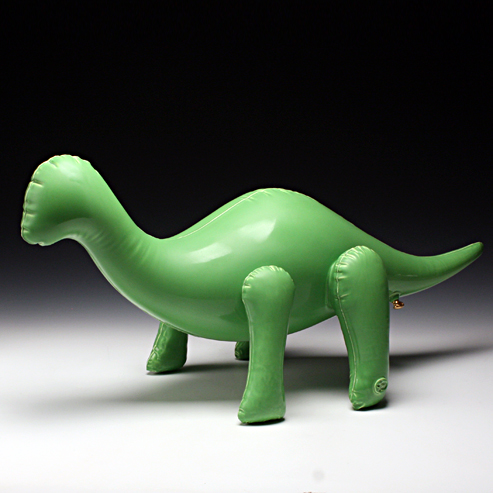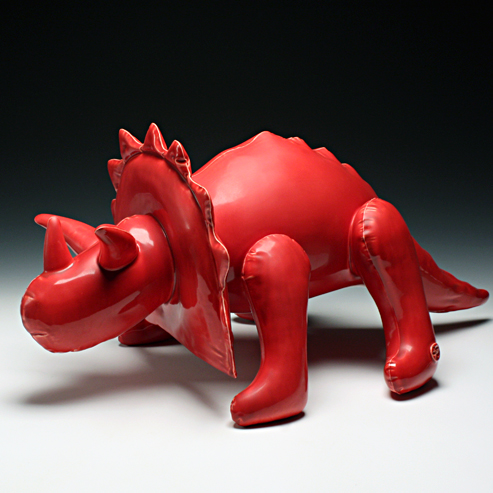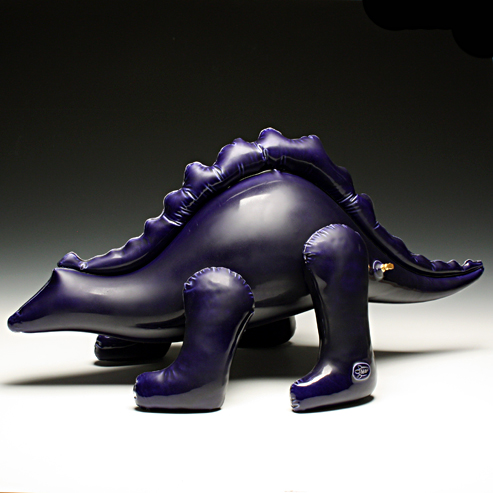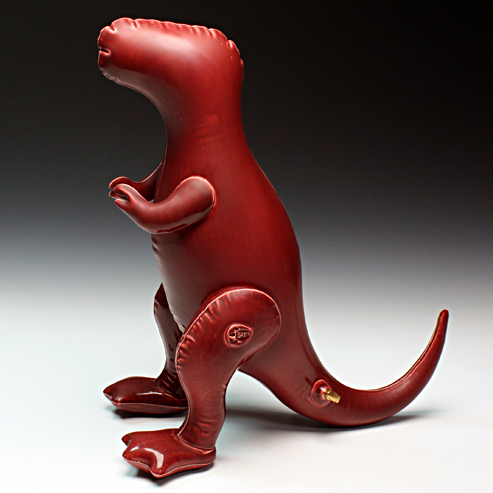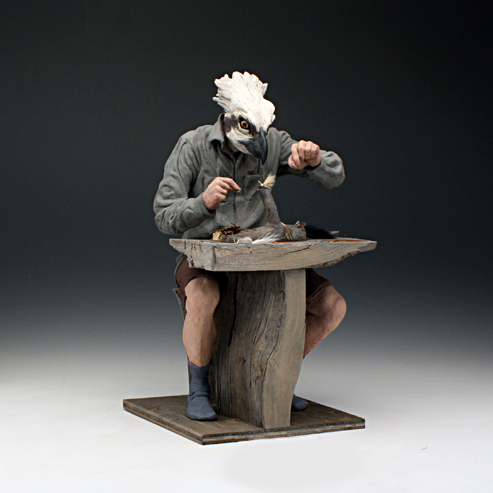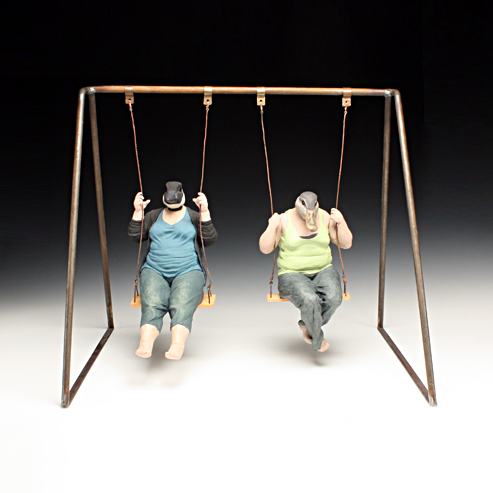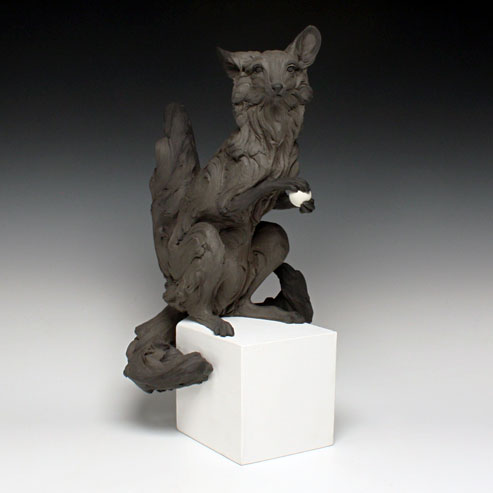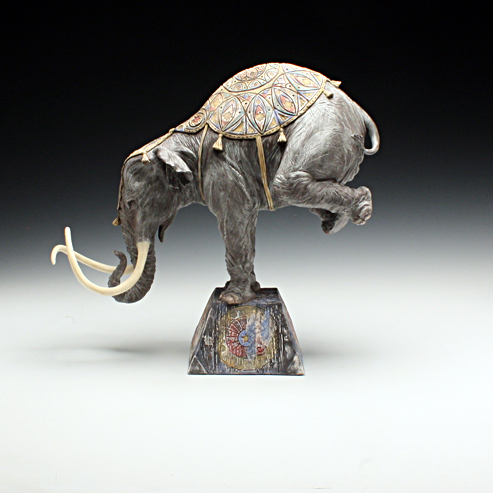Curatorial Statement
The basic definition of Zoomorphic is the leaping off point for this same-titled exhibition: having the form of an animal or being a deity conceived of in animal form or with animal attributes. Beyond the basic definition the work featured in the exhibition targets the struggle between the world of the wilds and the world human’s create. In all of our pomposity (our upright walking and our superior brains) we seem to be constantly in fear of losing ground. History tells us humans have pitched this battle for a while, trying to define how we will learn from the animal, harnessing the instincts of the animal, and assert dominion over them. Ancient cultures created effigies of animals, shrouded their human form in animal costumes, and covered the surfaces of vessels with stories of heightened animal escapades. Sometimes the vessel finished with an animal head, as if making a final prayer out of the object-a prayer calling upon the animal world to guide and protect the contents within the vessel as well as the receiver of the contents.
Alessandro Gallo’s renderings are probably the most empathetic in the exhibition. “The Angler” acknowledges the wisdom of the animal world’s hunting prowess. An osprey headed man leans over his workbench attempting to recreate a natural hatch, which will lure his prey upon a barbless hook. An Osprey has no need to recreate tools, but the fisherman hopes to understand and meld into nature enough so he might attack with the same singular focus. Beth Cavener’s “Kitsune” is inspired by the Japanese myth of an intelligent creature who possesses magical abilities that grow with age and wisdom. The Kitsune can change moving between the human and animal world in form, but never losing the clever agility of a fox. Through every trial the Kitsune gains another tail, up to nine.
Other objects in the exhibition move into darker territory, where human dominion takes precedent over empathy and emulation. David Smith presents a whimsical accusation with his “Cheekin’ Flower”, a perverse collage of parts deconstructed and reconstructed by industry. Ariel Bowman’s authentic rendering of a circus elephant puts the viewer in a state of awe, as though we were in front of a live elephant. While the details of the wrinkled skin are observed, the costume and posture will surely not be overlooked and we are left to ask, “Why is this magnificent creature being anthropomorphized?”
Monica Van den Dool’s animals are presented in whole and in parts, speaking to traditions of luck. She asks us to consider the other party in the equation. The events represented are not so lucky for the animal. The sculptures become reliquaries, holding mementos, which carry the essence of the animal into the human realm. Russell Wrnakle”s “Manual Conjuring” presents a meaty hand of raw terra cotta entering the skin of a hare. Life is urged into a flaccid skin. Forever we are asking, “How can we assume the traits we admire and fear?”
Crystal Morey has such empathy with nature that she puts human form within an animal skin. The renderings could be taken at face value. Once again humans are emulating creatures of the wood, but she wants us to see it is an absurd pairing. What place does a human have inside the animal world? Morey wishes to direct us to reexamine our actions within the animal domain. Ultimately she suggests that animals should have no truck with humans.
Finally we arrive at the work of Brett Kern and Merrie Wright. Each maker here has grabbed animal forms and thrust them into systematic industrial processes. Kern entices the childlike fascination within us for extinct dinosaurs. Reimagining them as inflatable toys with golden air valves, we are left with our fantasies of what could have been. Wright calls on more familiar creatures to explore the idea of camouflage and self-presentation. “Dazzle Squirrel” and “Dazzle Jays” are covered in patterns inspired by the camouflage of war ships from World War I, where the intention was not to hide, but rather to disorient the attacker by confusing estimates of distance and perspective with an altogether unnatural skin.
All the makers gathered in this exhibition acknowledge the use of animal as a vehicle for inciting greater empathy and reflection in the human viewer. What questions arise for you when you look into their mirror?

